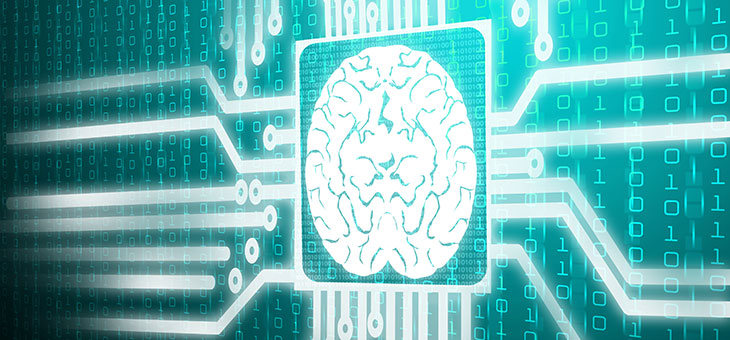Brain-Like Circuits Can Mimic Pavlov's Dogs

Singkham via shutterstock | http://shutr.bz/1wTo36X
(Inside Science) -- Artificial electronic circuits that mimic the pathways connecting neurons in the brain can learn, unlearn and store memories, researchers have reported. These inventions could not only help researchers better understand how the brain works, but could also lead to advanced new computers.
Brains are the most powerful computers known. This is due in large part to their complexity — the human brain has roughly 100 billion neurons, with about one million billion connections known as synapses wiring them together.
Scientists have long strived to mimic the brain electronically using either software or hardware. However, current software simulations of the brain, such as the IBM Blue Gene project, require lots of energy as well as dozens of cabinets of computers, while conventional hardware imitations of the brain are limited by the lack of components that can adequately mimic the way synapses behave, said researcher Shriram Ramanathan, a materials scientist at Harvard University in Cambridge, Massachusetts.
The way that synapses work underlies the ability of brains to learn. Synapses control the amount of electric charge transmitted from one neuron to another. The electrical conductivity of synapses can increase or decrease depending on how much they are stimulated, a property known as synaptic plasticity. Memories are encoded using collections of synapses of different strengths.
Conventional transistors cannot easily reproduce synaptic plasticity — for instance, they usually act more like on-off switches, going only either to 0 or 1, instead of ranging across a continuum of values as synapses do. Now Ramanathan and his colleagues have invented a new type of transistor that can mimic synaptic plasticity, developing systems that can learn, unlearn and store memories.
"This work represents a significant departure from traditional electronics," Ramanathan said.
The new device is made with films of samarium nickel oxide, or SNO for short. Unlike silicon and other conventional semiconductors used in electronics, SNO has a great range of electrical conductivities due to strong interactions between its atoms. When these materials are placed in contact with ionic liquids — fluids made up of both positively and negatively charged ions — applying positive or negative electric voltages to such coupled systems can respectively decrease or increase the long-term electrical conductivity of SNO.
"This is a rather new way of thinking about neural circuitry — it's creative and very clever," said materials chemist Eric Garfunkel at Rutgers University in Piscataway, New Jersey, who did not participate in this study.
The scientists then used their devices to conduct versions of Pavlov's famous experiments with dogs, in which canines learned to associate food with the ringing of a bell. The circuits could learn that two electrical stimuli are linked if they repeatedly came at the same time, and unlearn this association if these two stimuli stopped being coupled. The circuits could also store patterns of electrical signals they experienced, mimicking how the brain stores memories. The similarity of these devices to real synapses could help them serve as "an electronic platform to probe fundamental problems in neuroscience," Ramanathan said.
In addition, "in principle, it is possible to use these findings to construct analog cognitive devices that learn from interaction with their environment in a way similar to animals and humans," said neuromorphic computing researcher Michael Schmuker at the University of Sussex in England, who did not take part in this research. "The potential advantage over digital circuits, which are currently used for this task, may lie in lower power consumption."
Ramanathan cautioned this work is only a prototype meant to demonstrate proof of the concept.
"We need to advance this frontier significantly to get towards an actual brain-like entity that has orders of magnitude more connective elements," he said.
One key challenge is the speed of operation of such devices. "Electrons move very fast, but ions move relatively slow," Garfunkel said. Ramanathan suggested their devices could move roughly as fast as real synapses, "but it could be a challenge to get them to work at microprocessor speeds."
The scientists detailed their findings online Dec. 4 in the journal Physical Review Applied.

